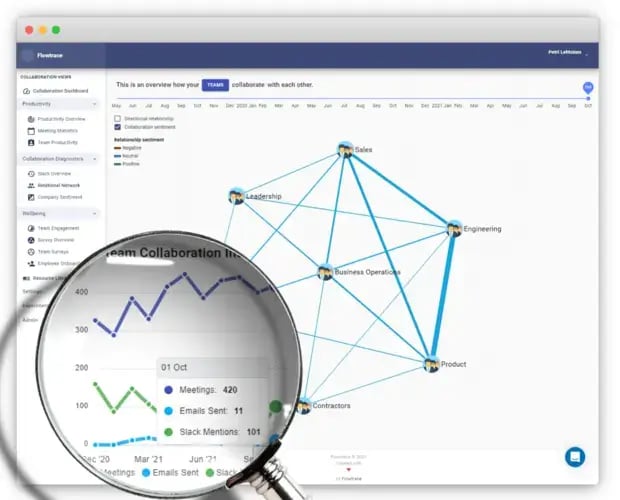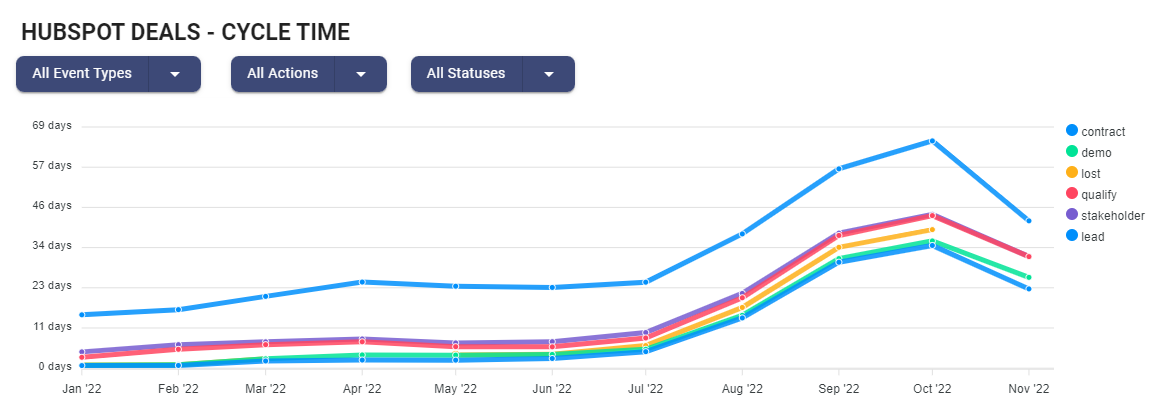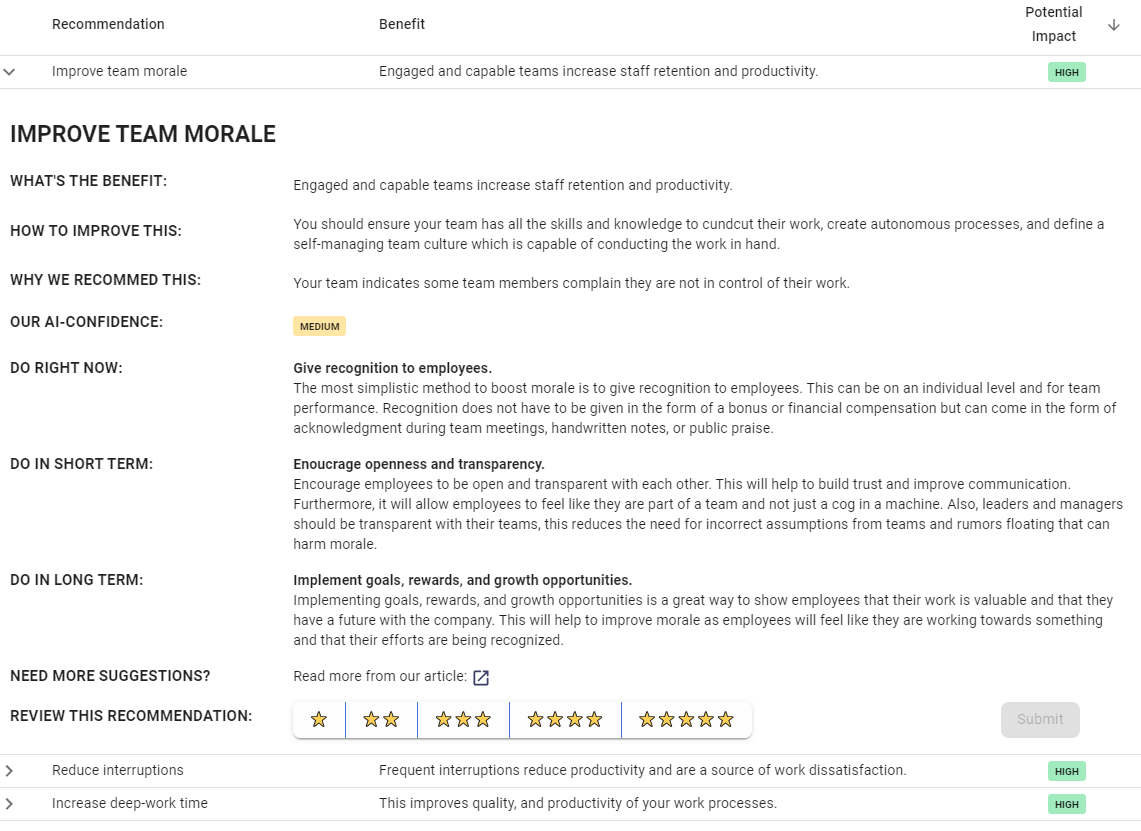Workplace challenges, such as poor leadership, lack of belonging and inclusion, are a common problem for organizations today. While it may be tempting to address these issues on an individual level, such as through employee training programs or stress-relief apps, it's important to recognize that these problems are often rooted in systemic factors. According to W. Edwards Deming, 94% of workplace issues are systemic in nature. Measuring and addressing these underlying factors is key to improving organizational performance.One of the reasons why organizations tend to focus on individual-level interventions is due to a cognitive bias called the "superbias." This bias leads us to underestimate the influence of situations and systems and instead favor individual-level interventions. But by focusing on individual-level solutions, organizations are ignoring the root causes of the problems.

In this blog post, we'll explore the importance of measuring and addressing systemic factors in the workplace. We'll look at the limitations of individual-level interventions and how company analytics can help organizations gain a better understanding of their systemic issues. Finally, we'll introduce Flowtrace, a company analytics platform that can help organizations measure and analyze systemic factors in the workplace, creating insights, metrics and recommendations for leadership teams, employees and managers on how to make work better.
The Importance of Systemic Factors in the Workplace
Systemic factors are the underlying conditions and processes that shape the way organizations function. They include things like organizational culture, processes, and leadership styles. These factors can have a significant impact on the performance and well-being of employees, yet they are often ignored in favor of individual-level interventions.

Recent research supports the idea that systemic factors are the primary cause of critical workplace issues. For example, a study by the Harvard Business Review found that leaders' failure to execute strategy within organizations is often caused by systemic factors such as unclear roles, lack of accountability, and poor communication. Similarly, a lack of belonging and inclusion in the workplace is often the result of systemic issues such as lack of diversity and bias in hiring and promotion practices.
It's important to recognize that addressing systemic factors is crucial for improving organizational performance. When systemic issues are ignored, they can lead to low employee morale, high turnover rates, and poor productivity. By addressing these underlying issues, organizations can create a better work environment for employees and improve overall performance.

Measuring and understanding systemic factors can be challenging, but it's essential for organizations that want to improve their performance and well-being of employees. In the next chapter, we'll discuss the limitations of individual-level interventions and why it's important to consider systemic factors in order to effectively address workplace challenges.
The Limitations of Individual-level Interventions
Individual-level interventions, such as mental health apps, resilience training, and lunch-break yoga, are often seen as solutions to employee stress, burnout, and moral injury. However, these interventions alone are not enough to address the underlying systemic issues that contribute to these problems.
For example, mental health apps may provide employees with stress-relief techniques, but they do not address the root cause of the stress, such as chronic understaffing or an erratically-behaving boss. Similarly, resilience training may help employees cope with stress, but it does not address the systemic issues that led to the stress in the first place.
Another limitation of individual-level interventions is that they often ignore the systemic issues that interfere with performance, such as operational bottlenecks, information silos and systematic understaffing, while invasively monitoring and "squeezing" individual employees. This can lead to a negative impact on employee morale and productivity.
Additionally, individual-level interventions can be ineffective when applied to problems that can't be solved with training, such as ineffective decision-making processes. They may also be costly and time-consuming, and they don't address the underlying issues that led to the problem.
It's important to recognize that individual-level interventions do have value, but they are not enough to address underlying systemic issues. In order to effectively improve organizational performance, it's necessary to also consider and address systemic factors. In the next chapter, we'll discuss the role of company analytics in measuring and understanding these systemic factors.
The Role of Company Analytics in Measuring Systemic Factors
Measuring and understanding systemic factors in the workplace can be challenging, but it's essential for organizations that want to improve their performance and well-being of employees. One way to gain a better understanding of these factors is by using company analytics.

Company analytics platforms, like Flowtrace, can help organizations measure and analyze systemic factors in the workplace, such as organizational culture, processes, and leadership styles. Flowtrace analyzes the workplace apps and tools, creating insights, metrics, and recommendations for leadership teams, employees, and managers on how to make work better.
For example, Flowtrace's analytics can help identify operational bottlenecks and systematic understaffing, which can lead to improved employee performance and productivity. It can also help leaders and managers understand the root causes of problems like poor decision-making, and provide recommendations for addressing those issues.

Additionally, Flowtrace can help organizations better understand their organizational culture, which can lead to improved employee morale, reduced turnover rates, and improved overall performance. By providing leaders, managers, and employees with data-driven insights and recommendations, Flowtrace can help organizations address systemic factors and improve workplace performance.

In conclusion, the use of company analytics platforms like Flowtrace is an essential tool for leaders that want to improve their performance and well-being of employees. In the next chapter, we'll discuss the conclusion and how Flowtrace can help organizations address systemic factors and improve workplace performance.
The Continuous Process of Improving Organizational Performance: The Benefits of Company Analytics
In this blog post, we've discussed the importance of measuring and addressing systemic factors in the workplace. We've seen that these factors are the primary cause of many critical workplace issues, and that addressing them is crucial for improving organizational performance. We've also discussed the limitations of individual-level interventions and how they alone are not enough to address underlying systemic issues.
It's important to recognize that addressing systemic factors is not a one-time event, but a continuous process. By using company analytics platforms, organizations can continuously monitor and understand the systemic factors affecting their performance and take action accordingly.
Flowtrace's analytics platform is designed to help organizations improve their performance and well-being of employees. By providing leaders, managers, and employees with data-driven insights and recommendations, Flowtrace can help organizations address systemic factors and improve workplace performance. If you're interested in learning more about how Flowtrace can help your organization, visit our website, contact us to schedule a demo, or take a look at our plans:
